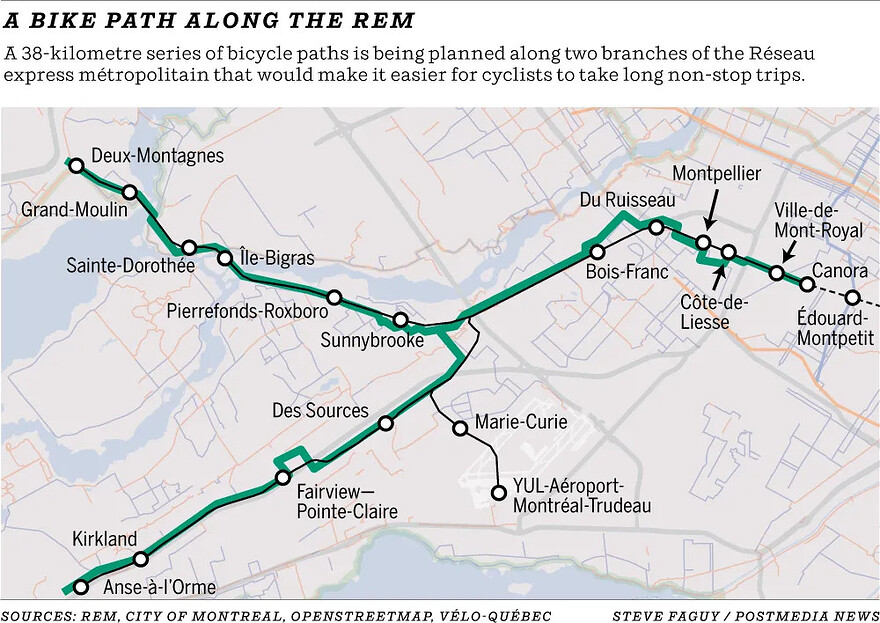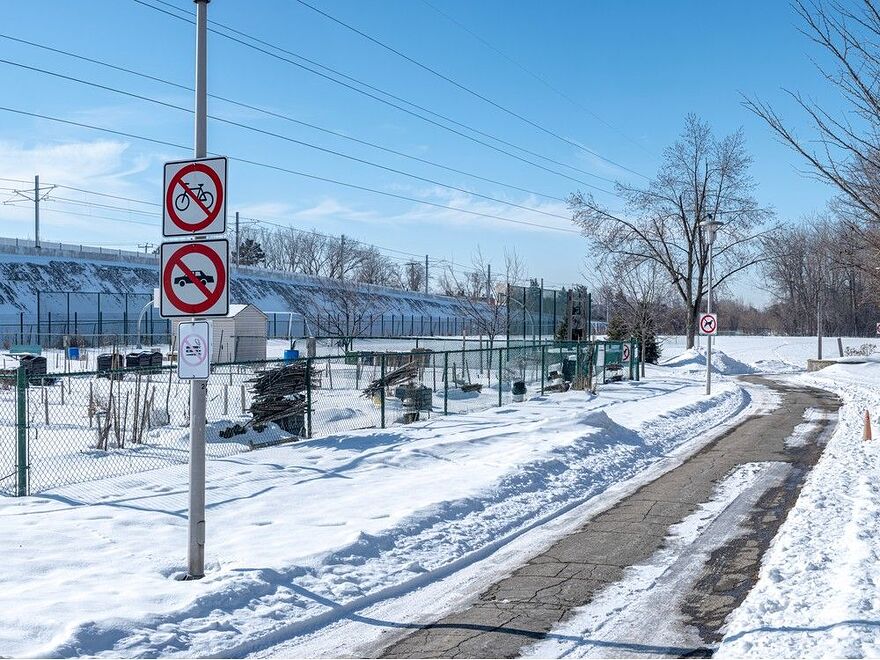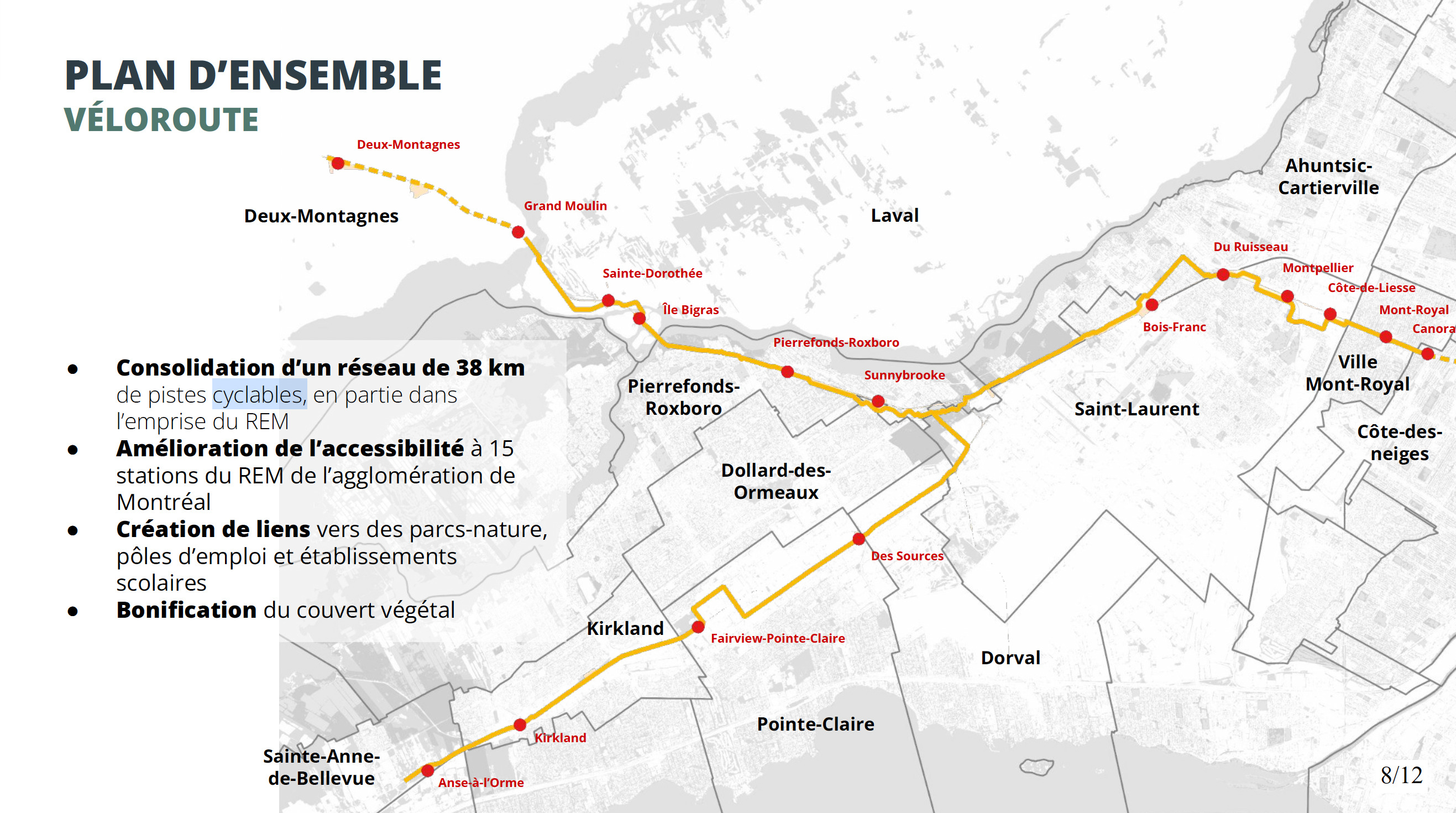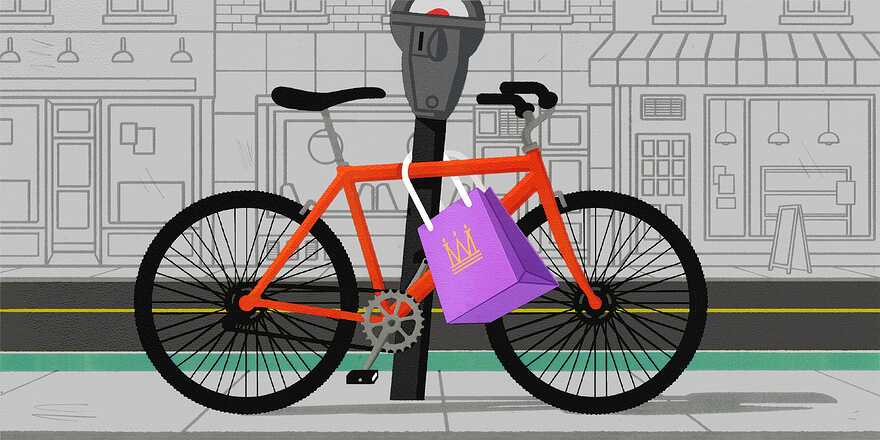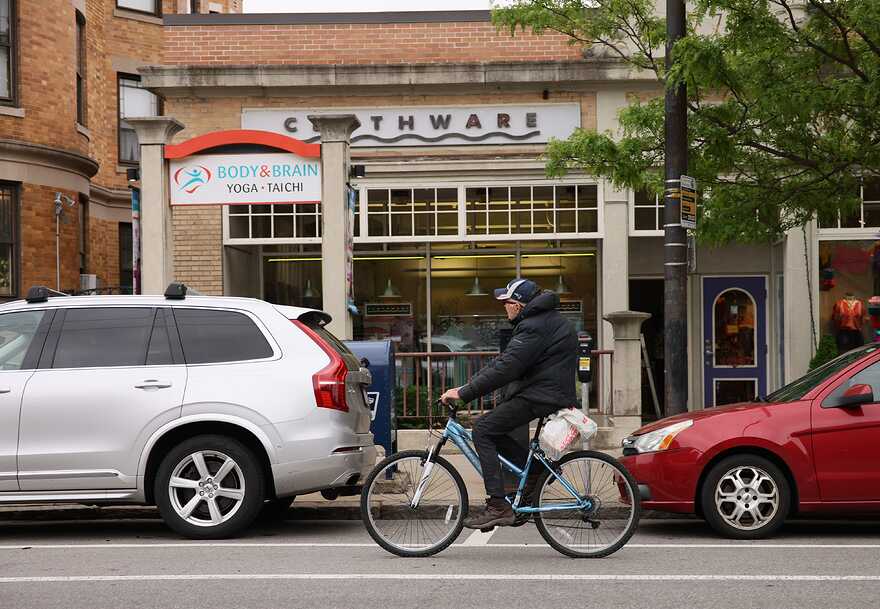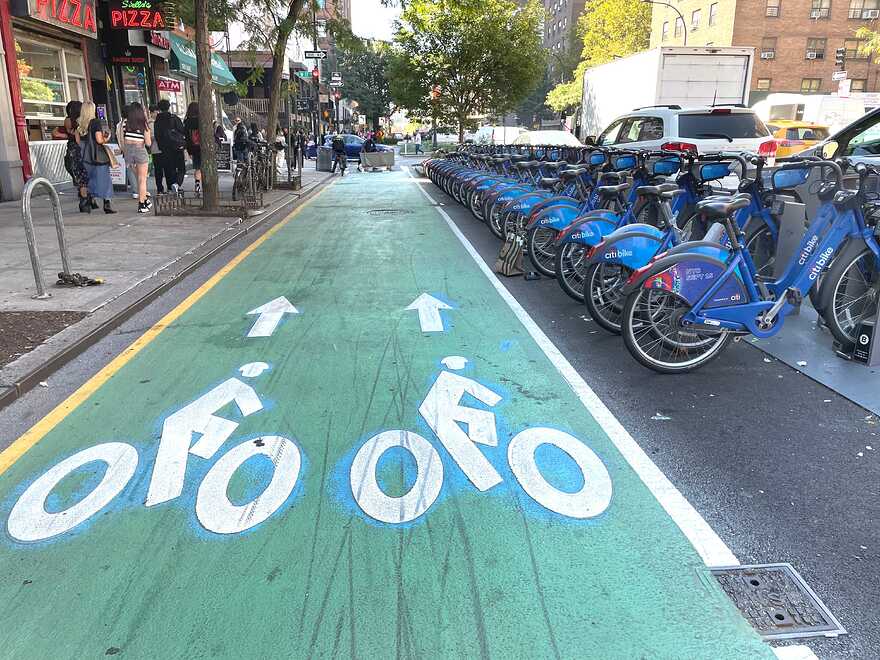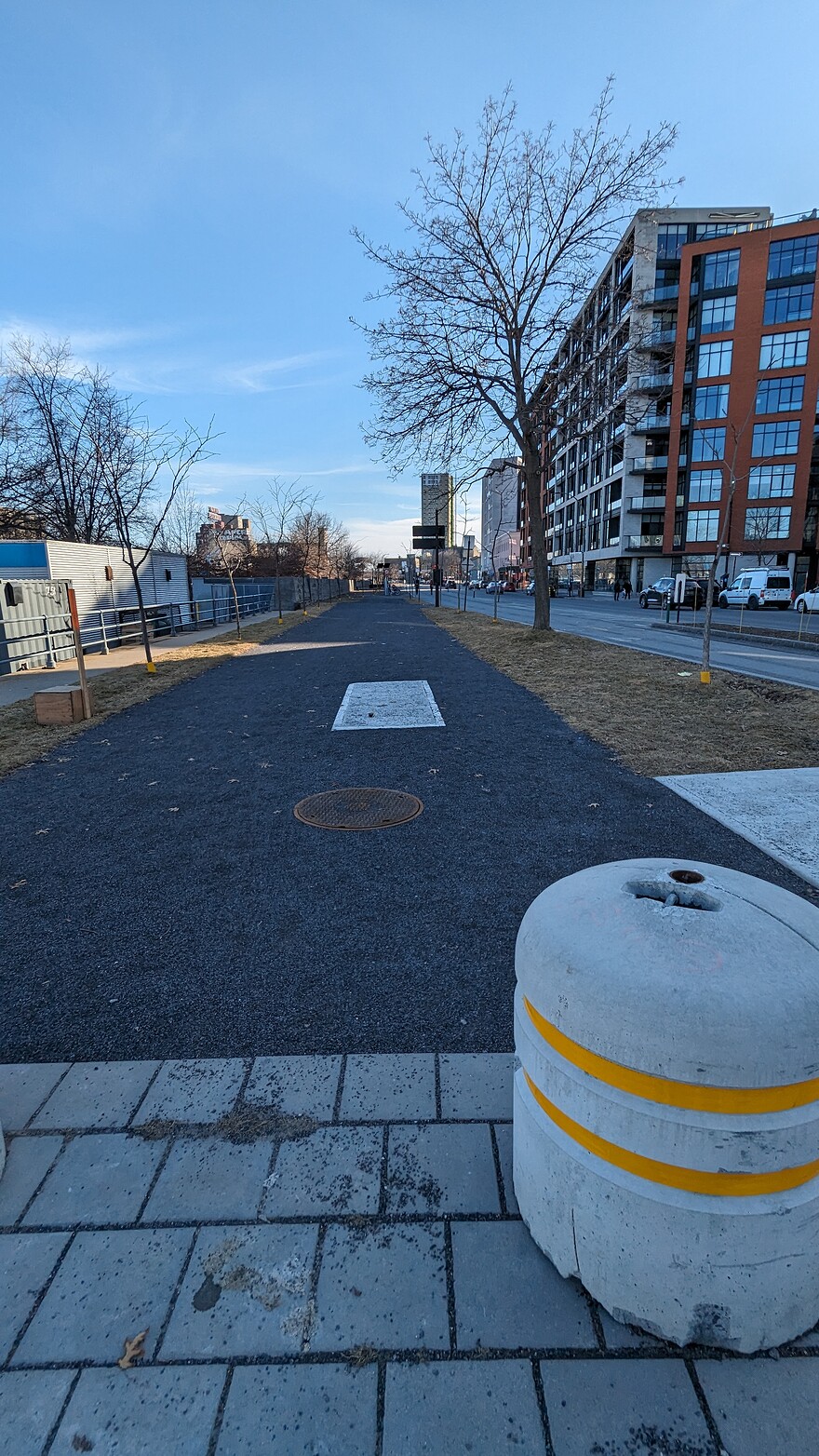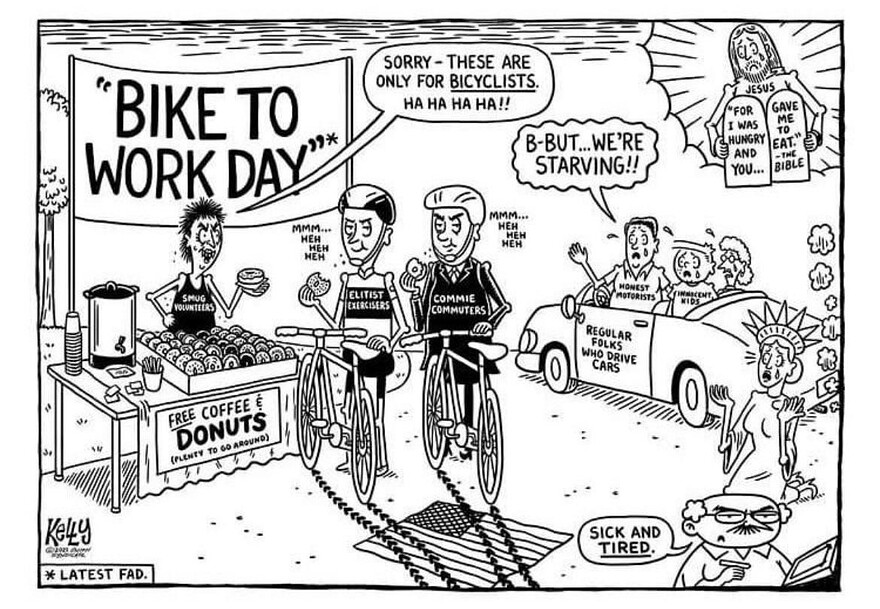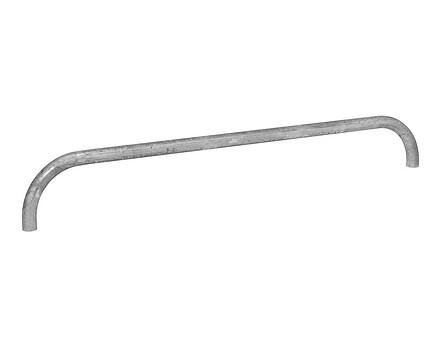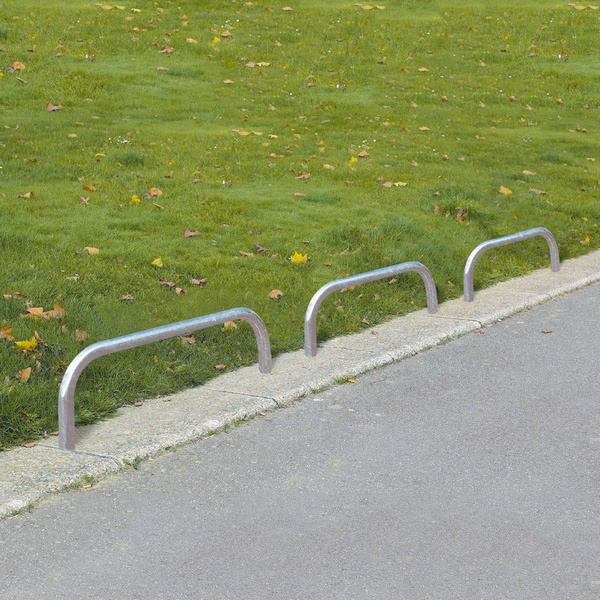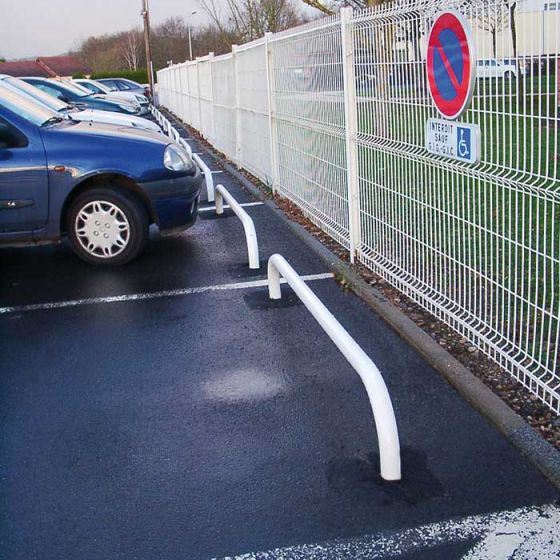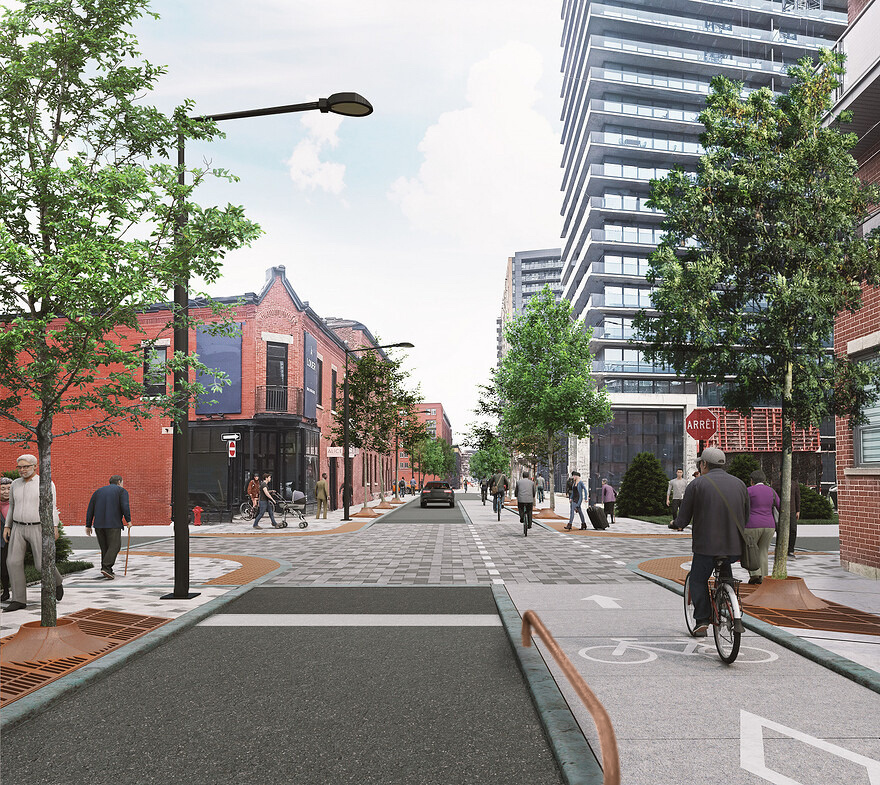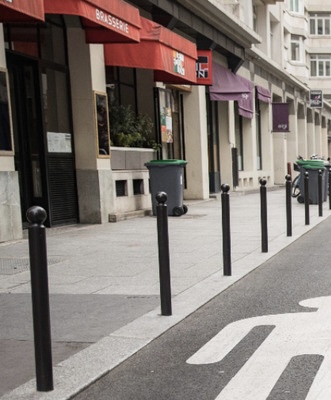Un article dans le Business Insider sur les répercussions positives des voies cyclables sur l’économie/commerce
Texte complet : Bike lanes are good for business
Bike lanes are good for business
Study after study proves it. So why do so many shops and restaurants still oppose better streets?
Pete Ryan for BI
Mar 7, 2024, 6:48 AM GMT-5
Businesses hate bike lanes. Sure, they reduce pollution, slow the pace of climate change, cut traffic fatalities, and make cities healthier and more pleasant. But they also take away parking spaces, which makes it tougher for shoppers to load up their cars with piles of stuff. Freaked-out business owners have been fighting bike lanes coast to coast, in cities from San Diego to Cambridge, Massachusetts. They worry — not unreasonably — that anything that makes it harder for customers to get to their stops will eat into their already precarious margins.
“As someone whose family had a small business when I was growing up, I know how invested you get in it,” says Joseph Poirier, a senior researcher at the urban-planning consultancy Nelson Nygaard. “It’s your whole life. Anything you think could threaten that, even if the government and their consultants tell you it’s not going to be a problem, is very scary. It makes sense.”
It’s also wrong. Four decades’ worth of research proves it. I know this because I’ve read every study and report I could find that looked specifically at the economics of bike lanes since 1984 — 32 research articles, to be exact. The results show that making streets friendlier for bikes — and sidewalks friendlier for pedestrians — is actually good for business. The rise of “complete streets” and “road diets,” as urban planners call them, has been a huge boon to businesses in cities.
I won’t walk you through every study, because most of them actually use survey data. Do you think bike lanes discourage shopping? How much do you spend when you ride your bike here? Surveys aren’t the most reliable way to look at this question. People lie, they misremember, they get stuff wrong. And anecdotal experience tends to loom too large. One angry customer who complains about not being able to find parking trumps the 10 who rode their bikes to your shop and didn’t say boo.
More confoundingly, survey after survey has shown that business owners overestimate how many of their customers drive to their stores, versus walking or biking. In a study of the effects of street improvements on a shopping corridor in Los Angeles published in 2012, more than half of the store owners on the bike-laned part of the boulevard thought most of their customers drove. The actual number was 15%.
So what we need is financial data. Revenue numbers. Sales taxes. Credit-card receipts. Employment figures. That’s the good stuff. And for methodological rigor, we want to case-match our study areas to similar neighborhoods that didn’t get bike lanes — and to numbers for the city overall, to establish a baseline.
That cuts the number of useful studies to just about half a dozen. Here, in brief, is what they tell us.
In 2013, a researcher at the University of Washington named Kyle Rowe looked at two shopping districts in Seattle that got put on road diets. Rowe compared sales taxes in these “Neighborhood Business Districts” with those in similar districts in the city that didn’t get bike lanes. In one NBD, which replaced car lanes and three parking spots with two bike lanes, sales closely tracked those in the bike-less areas, both in peaks and troughs. Conclusion: Bike lanes did nothing to reduce business. And in the other NBD, which replaced 12 parking spaces with a bike lane, sales quadrupled.
Was the spike in business because more cyclists came to shop? Rowe, a careful researcher, declines to make that leap. “It would be logical to assume that more bicyclists were coming to the NBD because of the new facility,” he writes, “but no conclusion can be made to connect mode choice to economic performance.” Still, there’s no mistaking the data: Adding bike lanes certainly didn’t hurt sales — and may have boosted them dramatically.
A year later, the New York City Department of Transportation conducted the same kind of study on a larger scale, examining sales-tax data in seven retail-heavy neighborhoods. A few were plaza-type hubs; the others were more linear retail corridors. All had been through the kind of extensive changes to pedestrian access, mass transit, traffic calming, landscaping, and bike paths that New York was pushing at the time. The results were striking. Compared with the overall business climate in each borough, sales in the bike-friendly areas soared by 84 percentage points in Brooklyn, 9 percentage points in Manhattan, and 32 percentage points in the Bronx. “Better streets,” the report concludes, “provide benefits to businesses in all types of neighborhoods,” from “lower-income neighborhoods with ‘mom & pop’ retail” to “glitzier areas with sky-high rents.”
The next couple of studies got even more specific. In 2018, Joseph Poirier, the urban planner I quoted earlier, looked at sales data from three retail neighborhoods in San Francisco with newly installed bike lanes. Drawing on everything from industry coding conventions to map data, he was able to draw detailed distinctions among hundreds of businesses: what they sold (retail versus restaurants), where they were located (right next to a bike lane versus a few blocks away), and who their customers were (coffee shops serving locals, say, versus a furniture store serving the entire city).
The results were mixed. In two of the three districts, shops and restaurants serving locals did way better than places serving a wider area. In the other district, sales tanked relative to the number of people a shop employed, suggesting that bike lanes gave an advantage to smaller businesses. “The takeaway is that it’s probably a minimal effect on businesses when you put in a bike lane,” Poirer says. “That actually makes a lot of sense. If you think of a busy downtown district, there’s not that many parking spaces relative to the number of people who come to the business.” In this case, bike lanes didn’t seem to help businesses much. But overall, it didn’t hurt them.
In 2019 Poirer was on a team that did another study of San Francisco. They looked at businesses directly adjacent to two kinds of bike infrastructure — Class II, which creates dedicated bike lanes denoted by a paint stripe, and Class III, where signs instruct cars and bikes to share the street. (Either way, blocks with the new lanes lost an average of three parking spaces.) Once again, the results were mixed. On Class II lanes, bars and barber shops and banks enjoyed increases in sales, while furniture stores and gas stations were more likely to experience decreases. Older businesses tended to decline more than new ones. Overall, in the year after the bike infrastructure went in, businesses on Class II streets lost a median of $27,921 compared with $19,390 for those on Class III lanes. But similar shops that weren’t on a bike lane lost $25,296. When it came to bike lanes, there were lots and lots of winners. But there were some losers, too.
The most definitive study, to my eye, came in 2020. Jenny Liu and Wei Shi, researchers at Portland State University in Oregon produced a 260-page report looking at neighborhoods that got bike lanes and other street improvements in Portland, San Francisco, Minneapolis, and Memphis. The team cross-referenced financial information like sales taxes with geographic data, so they could tell exactly where businesses were in relation to the street improvements. They ran three kinds of econometric analyses on each site. And they looked not only at revenue but also at the number of employees — per business and in total — in each study area. “I was really trying to be rigorous methodologically, to provide the kind of evidence that people can use to talk to their communities,” says Liu, the director of the Center for Urban Studies at Portland State.
Bike lanes don’t hurt the shops next to them. They usually help bring in customers.
Boston Globe
Like Poirier, Liu and Shi found that in many cases, only certain kinds of businesses benefited from the bike lanes and street improvements. Food and beverage did better; retail did worse. And just slapping a bike lane on a hectic thoroughfare didn’t do anyone any good. “On really large streets with high traffic volumes or speeds, even if you add a bike lane or pedestrian improvements, it still isn’t really inviting,” Liu says. “Just having street calming doesn’t always have positive results.”
But overall, Liu’s team found, retail areas benefited from better streets. Sometimes nothing changed, but more often the areas near bike lanes wound up with more employees and more revenue. That was true in Portland, at two sites in San Francisco, one site in Minneapolis (at the other, retail did better than food), and one site in Memphis (at the other, food did a bit better than retail). Across the country, again and again, the numbers told the same story: Either “business activity remained pretty much constant,” Liu says, or “certain types of businesses became much more prosperous.”
Back in the 1960s, when the advent of suburban flight and climate-controlled malls began to draw business away from America’s once thriving downtowns, cities tried to stanch the flow by banning cars on shopping streets. It was called, not exactly trippingly, “pedestrianization,” and it was a disaster. Pedestrian-only plazas couldn’t compete with the Golden Age of the Automobile, and many downtowns turned into boarded-up wastelands. That extinction event is still encoded in the genetic memories of today’s retailers and restaurateurs.
But things have changed. Nowadays, online retail is crushing brick-and-mortar worse than any half-assed pedestrian plaza ever could. What’s more, demand for new homes means lots of cities are putting them downtown, trading daytime workers for all-the-time residents close enough to ride a bike. COVID showed us it’s worth giving up parking spaces for outdoor restaurants. America’s cities are undergoing nothing short of a total rethink of what and whom downtowns are for.
You can pack way more bikes than cars into a small space — and that means way more shoppers.
UCG/Getty Images
Nationwide numbers of bike lanes are tough to come by. By one count, there are nearly 20,000 miles of bike-ready paths in the United States, but that includes rural routes and trails. Still, city after city is working to create European-style streets. Portland has over 430 miles of bike lanes, about the same as Chicago; New York City has more than 1,500; Los Angeles has added almost 1,000 miles since 2010. And every new mile of bike lane per square mile of city increases the number of cyclists by 1%. The training wheels are about to come off the “complete street” movement.
Now, advocates and policymakers should be honest about all this. Even if bike lanes boost revenues and employment overall, some individual businesses are going to win and some are going to lose. An older business selling heavier goods, or drawing from a wider watershed for its customer base, might well be in trouble. “Newer businesses who are thrilled with density and development around them are pivoting to a customer who’s younger, who’s arriving on a scooter or a bike,” says Larisa Ortiz, a managing director at the urban-planning consultancy Streetsense. “But this process of evolution toward bike lanes and mobility does not come without loss.”
One way I’d propose to help businesses adjust to the total remaking of the urban landscape is the most American solution of all: Just hand them some money. All you’d have to do is build funds into the budgets for street-improvement projects to compensate adjacent businesses for any sales they wind up losing. If your business takes a hit from all the bikes, you get a pay-out.
The most effective way to deal with opposition from local businesses is to just get the bike lanes built. Before-and-after surveys tend to show that in the long run, everyone winds up satisfied. “It’s a political question, and oftentimes it’s a very divided community when it comes to these types of projects,” Poirier says. “But once a street is changed, generally speaking, after six months or a year, nobody remembers what it used to look like. It’s the new normal.” All the data in the world may prove that bike lanes are good for business. But nothing beats experiencing them.
